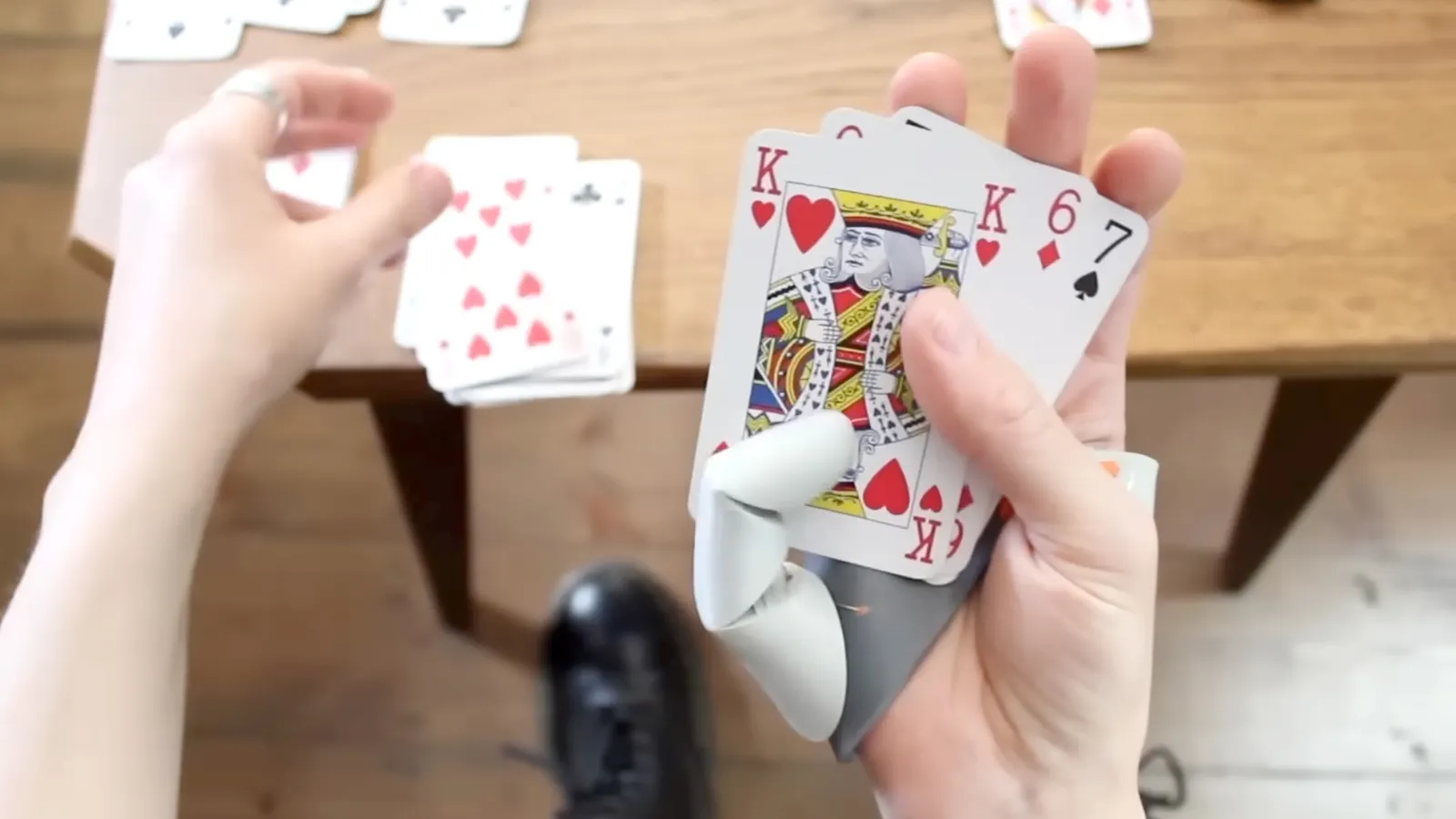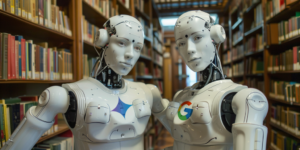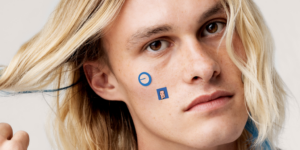Robotic Third Thumb Users Formed ‘Strong Bonds’ With Their Extra Digit
4 weeks ago CryptoExpert
A robotic third thumb, strapped onto your hand and controlled by your big toe, could be surprisingly useful, a team of researchers in the UK discovered. A new video of the third thumb in action makes clear that the additional opposable digit could become an almost natural extension of the hand.
That was the goal of the project, lead designer Danielle Clode told Decrypt.
“As an upper-limb prosthetics designer, I wanted to understand the unique relationship between a person and a prosthetic,” she said. “It’s a relationship unlike any other product, and I wanted to explore that.”
Clode said the third thumb was part of her master’s degree program at the Royal College of Art in London.
“The third thumb is a flexible 3D-printed thumb extension for your hand, controlled by your toes,” she explained. ”It is operated wirelessly with pressure sensors and affords proportional control over two degrees of freedom.”
The third thumb uses two motors mounted on a wrist strap, powered by an external battery pack worn on the wearer’s upper arm. Sensors attached to the user’s big toes, in turn powered by batteries attached around the ankles, control the thumb’s movement. When pressure is applied to either of the big toes, the thumb moves forward and back and opens and closes, respectively, based on the pressure applied.
The Cambridge video shows a variety of applications, many allowing the execution of tasks that would normally require two hands, from opening a soda bottle to holding a paintbrush and painting with the same hand. The Third Thumb is also seen holding an egg while cracking another, and sliding playing cards out of a full hand.
According to Plasticity Lab, over 596 participants ranging from three to 96 have tried out the Third Thumb with most taking to the technology quickly, sometimes within a minute of putting on the device.
“So after training, people report that the third thumb feels more like a part of them—we have also had people form strong bonds with the thumb,” Clode said. “Some of our participants needed a little bit of time to say goodbye to the thumb after the study ended, or reported feeling like they were missing something after the training had finished.”
Even so, the sensation of separation was not quite “phantom limb syndrome,” Clode said, as participants were only using the device for a few minutes at a time and to assess first-time usage. Phantom limb syndrome refers to a condition in which patients experience sensations in a limb that does not exist.
Clode did acknowledge that participants in longer studies, five to seven days, were observed to have an increased “embodiment” on the third thumb, but said none of the participants reported feeling any phantom limb pain after the device was removed.
“This is likely because we believe phantom pain to be driven by physiological mechanisms that wearing the thumb doesn’t interact with,” she added.
Clode said she was initially looking to explore what it was like to control something extra attached to her body, which led her to prosthetics. When she started posting about her experiments online, Cambridge University-based Plasticity Lab reached out to her.
“They were already exploring augmentation in the brain,” Clode said. “We started collaborating on this research shortly after, and I now work as an in-house designer with the Plasticity Lab, collaborating on augmentation neuroscience research.”

Work that began in 2021 has since drawn support from several institutions: the Institute of Cognitive Neuroscience at University College London, the WIN Centre at the University of Oxford, and the Wellcome Trust Centre for Neuroimaging at University College London.
Augmentation neuroscience research is a field that investigates how the brain adapts to and interacts with augmentative technologies, such as robotic body parts. It also explores the neural processes involved in learning to control external devices and how they become integrated into the body.
The most widely known company in the augmentation neuroscience field is Neuralink, the neurotechnology company founded by Elon Musk in 2016. Neuralink uses augmentation neuroscience research to design its brain-computer interface (BCI) technology. In January, Neuralink implanted its first chip in a human test subject.
The recipient of the BCI chip was an Arizona-based quadriplegic man, Noland Arbaugh, who in March revealed his involvement with the project and his experience with it, including electrodes detaching from the implanted chip but also setting a new brain control world record using the Neuralink chip.
“With any wearable device – or even electronic device, the challenge is always size and weight versus strength versus battery life,” Clode said. “It’s tough to make very lightweight and small yet strong electronics that last before needing to be charged.”
Clode said the third thumb study aims to demonstrate the technology’s feasibility and ease of use, which is a major step toward commercialization. But she acknowledged that it’s not quite ready for the masses.
The development roadmap includes scaling up testing, working with patient groups in the medical space, and preparing for regulatory processes, she said.
“We are currently in the R&D phase with a working prototype that has been extensively tested,” Clode said. “Our focus remains on refining the technology and ensuring it meets the highest standards of functionality, safety, and user adaptability, as well as using it as a model to explore augmentation in the neuroscience research space.”
Edited by Ryan Ozawa.
Generally Intelligent Newsletter
A weekly AI journey narrated by Gen, a generative AI model.












